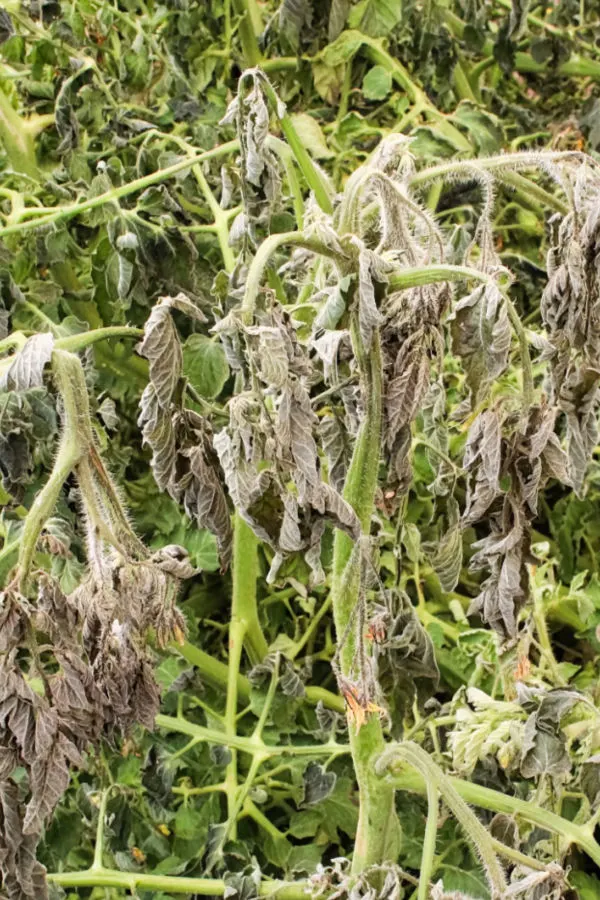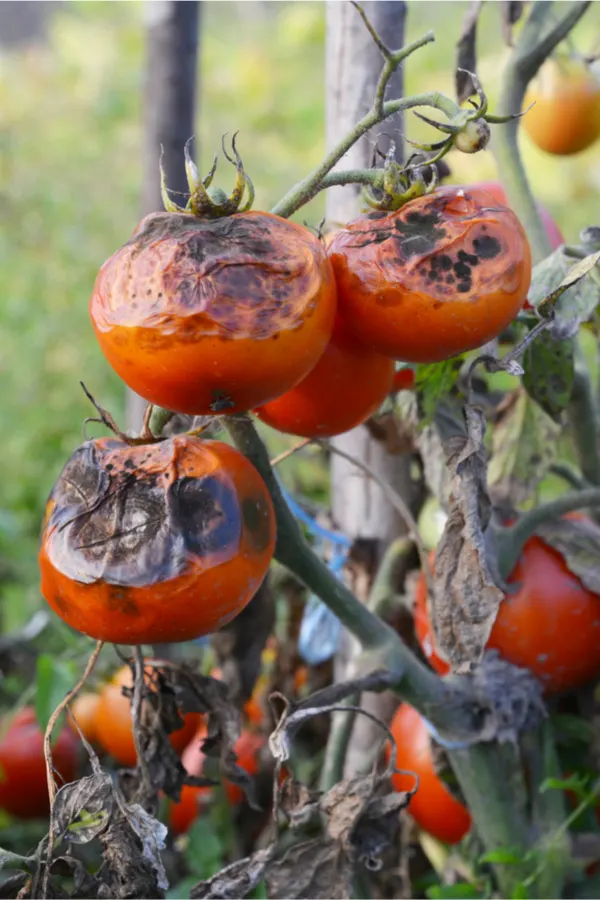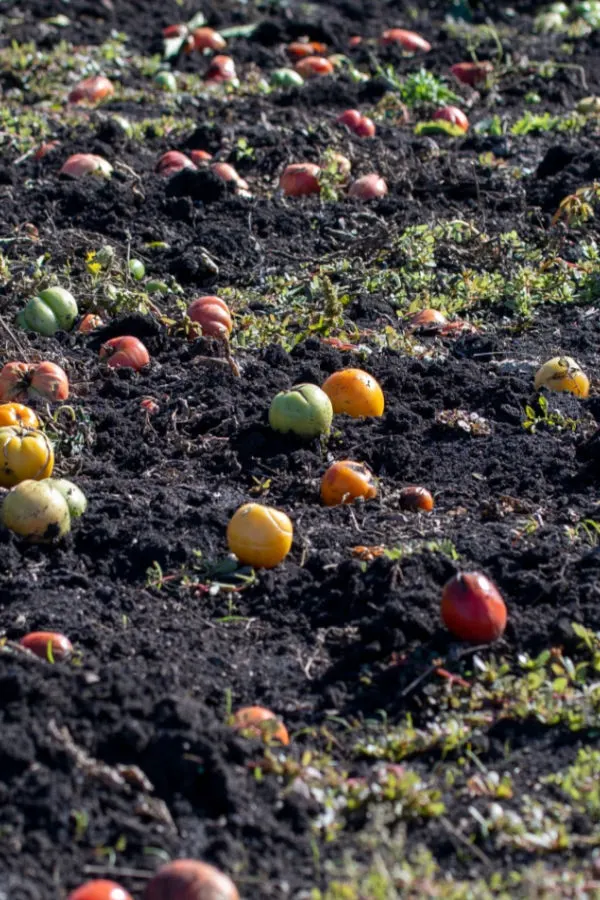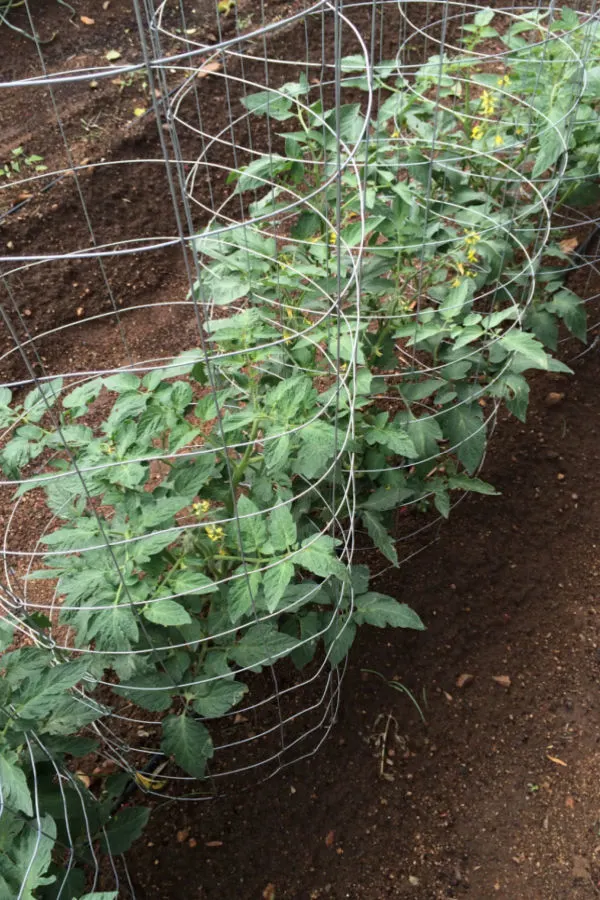One of the best ways to grow a highly productive and healthy garden next year is by simply avoiding five of the biggest and most common fall garden mistakes gardeners often make at the end of the growing year.
Although many look at Autumn as a time to put their garden on the back burner, it’s really the time to set next year’s garden up for success.
What a gardener does or doesn’t do to their garden space in late fall can make a huge difference in its performance next year. Not just in the overall health and productivity of plants, but in the amount and severity of future weeds, pests and disease.

In fact, the old saying “a little work now pays off later ” couldn’t be more accurate when it comes to spending a bit of time in your fall garden. Except that when it comes to those chores, you have to make sure it’s the type of work that will help your garden – and not harm it.
Unfortunately, as you will see below, working your soil too much in the fall can cause just as many problems as not working it at all. With that in mind, here is a look at how to close your garden down right this year and set the stage for big success!
The 5 Biggest Fall Garden Mistakes – And How To Avoid Them!
1) Not Removing Plants
Allowing a garden to simply sit idle after a growing season can create a long list of future issues. As plants start to wither and die off, they should be removed immediately from the garden – roots and all. Allowing plants to remain until late fall, early winter or even worse, until till next spring will cause a whole host of short and long-term problems.
As plants begin to die off, so does their resistance to disease. Withering vegetable plants can become a magnet for mold, fungus and disease to take hold. Disease that can then stay in the soil and transfer to next year’s plants.

When left in place, many pests will lay their larvae on the leaves and stems of decaying plants, or in the soil right underneath them. And when they do, it sets the stage for an insect feast the next year.
Decaying plants are also a beacon of hope for pests in the fall. As winter approaches, insects look for shelter to survive the upcoming cold and snow. And the rotting stems, leaves and roots of vegetable plants left in the garden just happen to be an ideal home!
2) Remove Old Fruit On The Ground – How To Avoid The 5 Biggest Fall Garden Mistakes
Leaving old plants to remain in the garden is bad enough, but leaving a bunch of old, decaying rotting fruit and vegetables on the soil’s surface can really cause issues – both with disease, and volunteer seed sprouts next year!
Decaying fruit on the surface of the soil will harbor the same insects and disease that inhabit leftover plants. But perhaps equally as bad, it can set the stage for hundreds if not thousands of volunteer sprouts next year.
The leftover fruit that remains on old plants will begin to drop seeds from their core as they decay. Those seeds then find shelter in the soil below to overwinter. They then lie in wait to pop up in next year’s garden.

Volunteer seeds might not seem like a bad idea. After all, they are vegetable plants, right? The only problem is that these are usually seeds that were not from the best of the plant. Not only will they usually not produce good plants, all of those sprouts have essentially become weeds, and they are now competing for the resources of your newly planted veggies.
3) Clean And Disinfect Stakes, Cages, Trellises & Tools – How To Avoid The 5 Biggest Fall Garden Mistakes
Another big mistake gardeners often make in the fall is to not remove, clean and disinfect garden stakes, trellises, and cages. Nor do they clean and disinfect their tools.
Just as with your old garden plants, it is important to remove trellises and garden supports before winter. Not only will it prolong their life, it also gives you time to thoroughly clean and disinfect them. This can be especially important for tomato and pepper stakes or supports.
Both of these plants are highly susceptible to disease. And believe it or not, disease can easily overwinter on the support surfaces to strike next year’s crops.
To clean, take a simple homemade solution of 1/8th cup of bleach with a gallon of water and wipe them down before storing. Use caution when working with the homemade disinfectant, being sure to wear proper hand and eye protection.

Store your supports out of the weather. The longer they are out in the elements, the faster they will break down. And they are certainly not cheap to replace! While you are at it – clean off those garden tools with the same disinfecting routine.
Garden tools are even more likely to spread disease among plants when not properly cleaned. Pruners are at the top of the list when it comes to cleaning. They are cutting into different plants, and residue can easily transfer from plant to plant. It only takes a few seconds, but cleaning and disinfecting your tools goes a long way toward garden health.
#4) Leaving Soil Bare – How To Avoid The 5 Biggest Fall Garden Mistakes
In terms of importance, leaving your soil bare for the winter is actually one of the biggest fall garden mistakes of all. Fall is the chance to rejuvenate soil and to get a start on eliminating next year’s weeds – and neither can happen when you leave your soil bare!
Quite simply, bare soil is an open invitation for weeds to gain a foothold in your garden. The best choice of all to cover your soil in the fall is by planting a cover crop. It will not only protect your soil from erosion and blowing weed seeds, but it will also rejuvenate the soil with nutrients.
Perhaps best of all, it’s so easy to do! To plant a cover crop, all you need to do is gently rake out your soil. There is no need for tilling at all. In fact, tilling should be avoided. Tilling a fall garden unfortunately plants all of those volunteer weed and vegetable seeds that fell for next year.
Simply sow with a cover crop variety such as annual rye or oats right over the soil. To complete, place down a thin 1/2″ layer of straw as a mulch. This helps to keep weeds out and moisture in, allowing the crop to germinate even better. For more on cover cropping, see : How To Plant A Fall Cover Crop – Power Your Garden & Stop Weeds Now!
5) Not Creating A Fall Compost Pile – How To Avoid The 5 Biggest Fall Garden Mistakes
Last but not least, make sure you build a big fall compost pile. One of the biggest mistakes you can make in the fall is to not start making compost for next year!
Fall is the perfect time to create a compost pile. Not only is there an abundance of garden and flowerbed waste, but leaves are falling everywhere. Actually, fall really is the easiest time of all to build a compost pile. Everywhere you look, there are materials to use!
One note of caution when building that pile, avoid putting in old tomato or pepper plants. Both have a high likelihood of carrying disease. And home compost piles usually do not get hot enough to kill off those diseases.
One thing is for sure, creating a compost pile in the fall means you can have ready-to-go compost late next spring and summer. Compost that can help power your garden to better than ever results. Here is to avoiding the five most common fall garden and to setting the stage for an amazing garden next year! Happy Gardening – Jim and Mary.
Jim and Mary Competti have been writing gardening, DIY and recipe articles and books for over 15 years from their 46 acre Ohio farm. The two are frequent speakers on all things gardening and love to travel in their spare time.
As always, feel free to email us at thefarm@owgarden.com with comments, questions, or to simply say hello! You can sign up for our free email list in the subscribe now box in the middle of this article. Follow us on Facebook here : OWG Facebook. This article may contain affiliate links.
